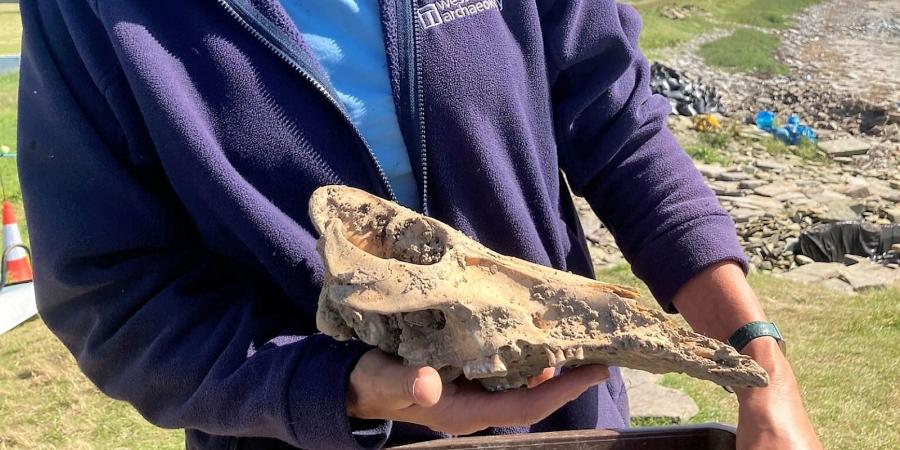Principal Osteoarchaeologist, Jacqueline McKinley, recently returned from excavations at Swandro, Rousay, Orkney in the Northern Isles, Scotland. Working to save an important Iron Age settlement from coastal erosion, this is the first-time archaeologists have been on site since the pandemic. Jackie recounts her experience on this fascinating site.
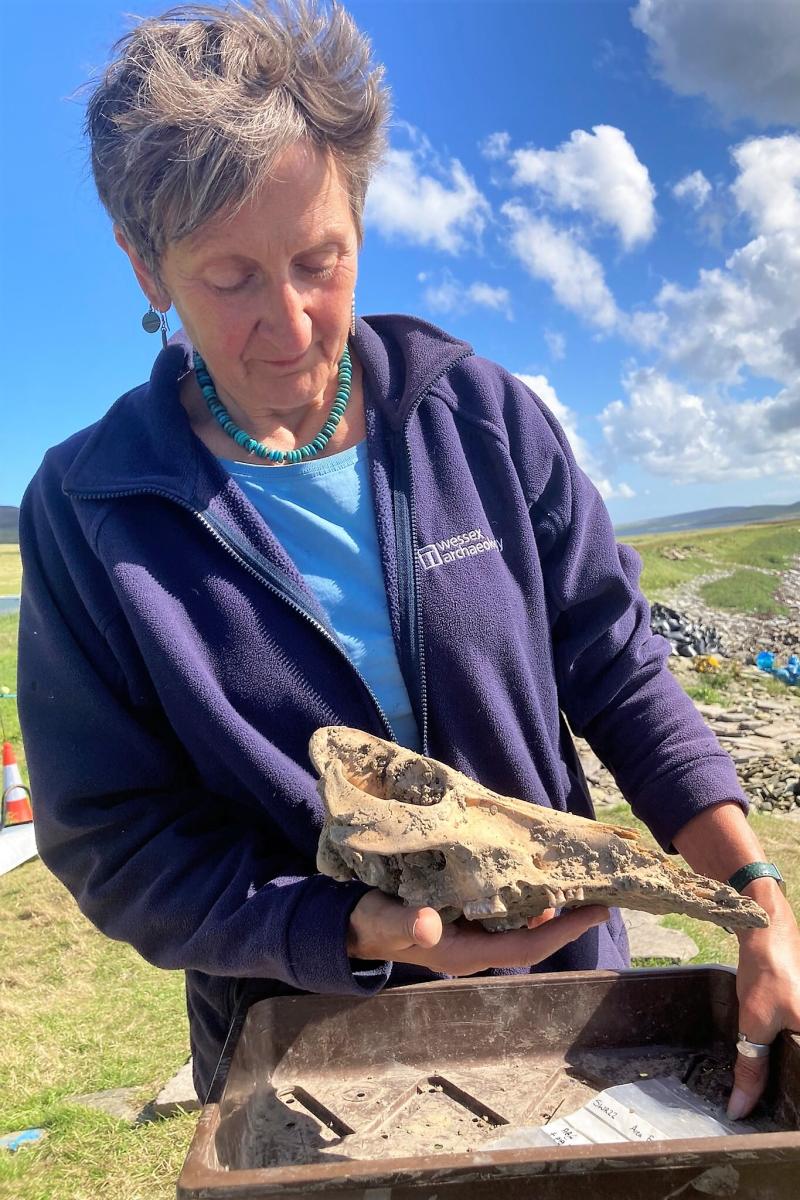
Reunited with old friends at Swandro
After a seemingly interminable three-year hiatus (has it really been that long? … COVID-19 hit before the 2020 season) I finally got to return to the archaeological glories of Rousay with my esteemed colleagues (& long-time friends) Drs Julie Bond and Steve Dockrill of Bradford University to tread the stones of Swandro. The observant amongst you might note my apparent lightness of travel whilst awaiting the Rousay ferry at Tingwall, having arrived in Orkney whilst my luggage languished at Heathrow. My first day on site involved wearing a variety of donated clothing (including some rather roomy trousers belonging to my friend Keith, an experienced volunteer and professional re-enactor) whilst wielding Julie’s trowel – thank goodness I wore my digging boots to travel.
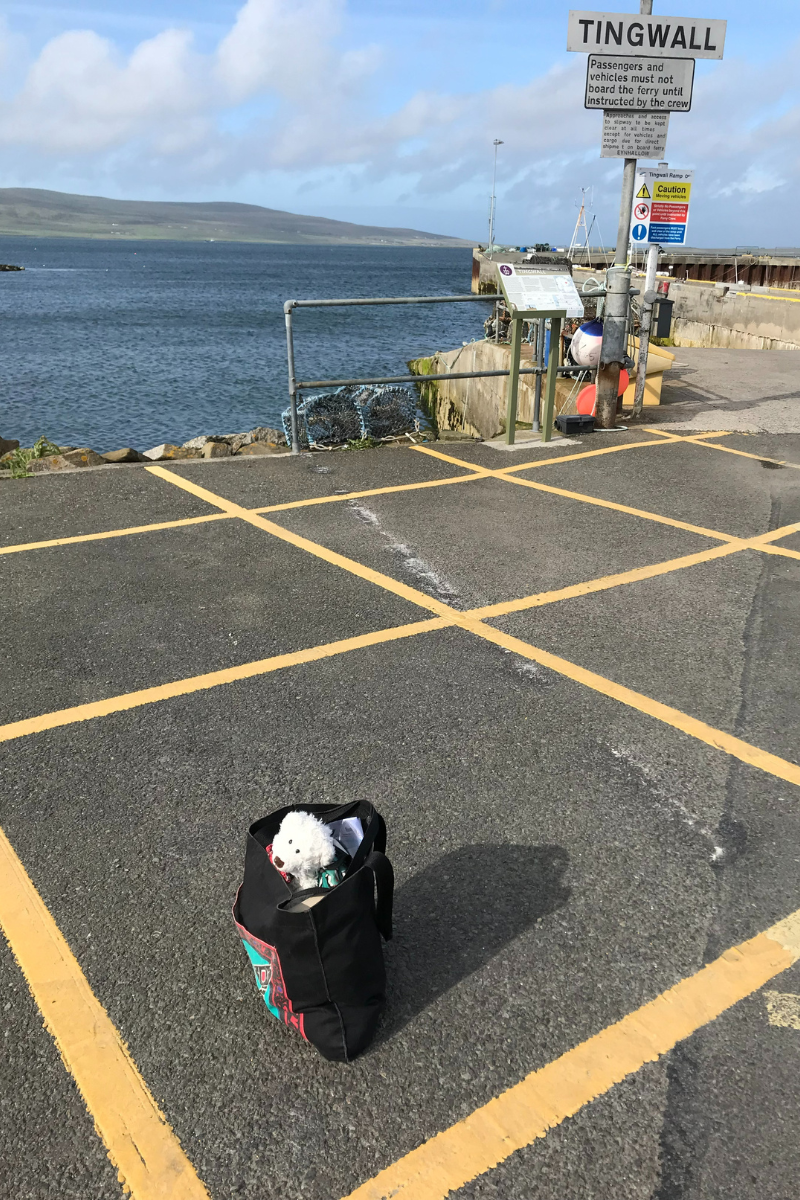
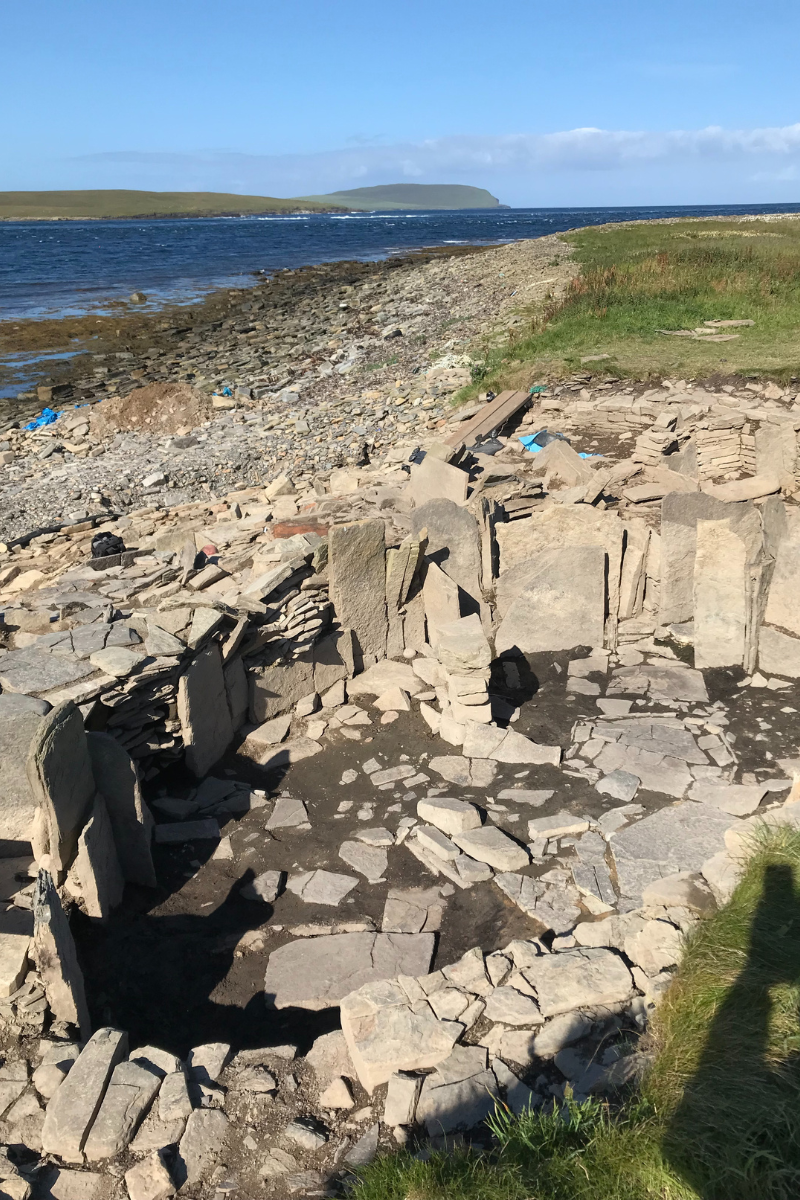
Above: Left - Waiting at Tingwall for the Rousay ferry, sans luggage and - Right - Structure 5 from the east, with the storm beach beyond (Mainland Orkney beyond)
A joy to be re-united with old friends; I’m one amongst several professional archaeologists working in the commercial sector who are so enamoured of Swandro’s archaeology that we readily indulge in the ‘busman’s holiday’ to lend a hand on the site, which is funded from a variety of sources, including the public (see Swandro-Orkney Coastal Archaeological Trust webpage), and also serves as a training excavation for archaeology students principally from the University of Bradford.


Above: Steve & colleagues awaiting cloud so he can take a photograph
Swandro's archaeology - being lost to the sea
Investigations commenced in 2010, focusing on the portion (approx. 1/3rd) of the site which lies on what is aptly named a storm beach. The summer neep tides lap against the base of the monument, which now rests below the level of the adjacent beach, but the winter storms see waves lashing up to the grass level, as demonstrated by the kelp and sea plastics lying over the upper cell I so carefully excavated three years ago. Each year, a little more of the site is lost to the sea; the outer wall of the earliest phases of the monument (potentially a Neolithic chambered tomb) had already gone last time we were here in 2019. In the three intervening years, the sea has taken a heavy toll with the loss of further parts of the monument’s massive outer wall and marked slumping of other walls within parts of the monument up-slope.
For example, the main central passage walls have sagged outwards by around 15 degrees; this is due to the underlying material being slowly (ish) eroded by the sea from above and the action of water in the spring-line (intersection of the natural water level in the ground with the surface along which springs are commonly found) which runs under the site. The immense power of the sea never ceases to amaze, shifting sizable stones which would require great effort from we mere humans to move but a few metres. It’s only a matter of time – and tides – before all that is visible of this beach-side section of the site is lost … but for now, we seek and record to capture the story of Swandro!


Above: Left - Main passage of Structure 6 and Right - Dinky wee round-based vessel with matching stone pot lid
Bringing the sunshine
The excavation season always starts with removal of the carefully laid protective tarpaulins, sandbags and stone which render the site (almost) indistinguishable from the storm beach for much of the year - which is why I time my arrival after this particular task has been completed (what can I say?). To my fellow archaeologist’s delight, I seemed to have taken the sun with me (after two weeks of unrelenting rain), though thankfully, this being Orkney, we had a fresh breeze which saved us from the scorching heat being experienced South (and the flies, always an issue here).
Above: The site as it stood at the end of the 2022 excavation season
‘House of Pigs’
I was deployed in various parts of the site this year, but I spent most time in the main passage and Structure 6 (aka the ‘House of Pigs’… at least by me). In the main passage we were trying to get the whole length from the entrance stratigraphically in sync. We almost made it (at least with respect to the upper level of paving, there is an earlier level below this – something for next year) as far as the hearth at the east end which relates to a later phase but had to stay put until we’d further investigated Structure 6 to the east of it.
The north wall of the main passage (the south wall having long gone to the sea) had all collapsed to the north (i.e., inwards) in what must have been a catastrophic event the nature of which we are as yet unsure of. It must, however, have looked pretty striking in its day, not just functional but decorative; comprising interspersed panels of orthostats (upright stones) and horizontal walling, divided by columns of small stones and smaller orthostats set at right-angles. This was not just any old passageway but one intended to impress. It was here, behind one of the orthostats (there were several stages to the build … a bit like layers of wallpaper) that I recovered (inevitably in last 3 mins of the day), a dinky wee round-based vessel with matching stone pot lid. Residue analysis will be undertaken to ascertain its function. Although the vessel was incomplete, the neat fit and juxtaposition of the pot lid indicates the two components were made for each other, suggesting they might have been ‘placed’ (hidden?) rather than just incidentally incorporated.
Above: Structure 6
Structure 6 started the season full of rubble collapse. By removing the upper levels of rubble (probably the remains of later stone robbing – Vikings did not just steal people and belongings but took the stone from earlier structures to build their own, in this case just to the northeast) we eventually uncovered more ‘organised’ rubble, i.e., the angle of tip of the stones demonstrated which of the surrounding walls they had fallen from. We ended the season – or at least my part in it – with a roughly paved level containing midden material which, given the moisture level, indicates it will not be much further down to a more stable floor layer. There is much left to discover regarding this structure which will probably have to await our next season at Swandro; for example, how does Structure 6 relate to Structure 5? (I’m sure there is a blocked entrance) and the main passageway (that hearth has to go 1st!); and why the pig skull and piglet?
Hive of industry
So far this year three pig skulls and two piglets have been found in this area of the site (hence the ‘House of Pigs’)., and Dr. Bond assures us that pigs were rare here in the Iron Age/Pictish period – unlike other animals (cattle and sheep), their only purpose was to provide meat. This made pigs something of a luxury/indulgence; might this, like the ‘posh’ corridor walls, indicate the high status of the site? The number of hearths of a non-domestic as well as domestic nature uncovered on the site to date suggest it might have been an ‘industrial’ centre in the Iron Age … the home of skilled specialists.
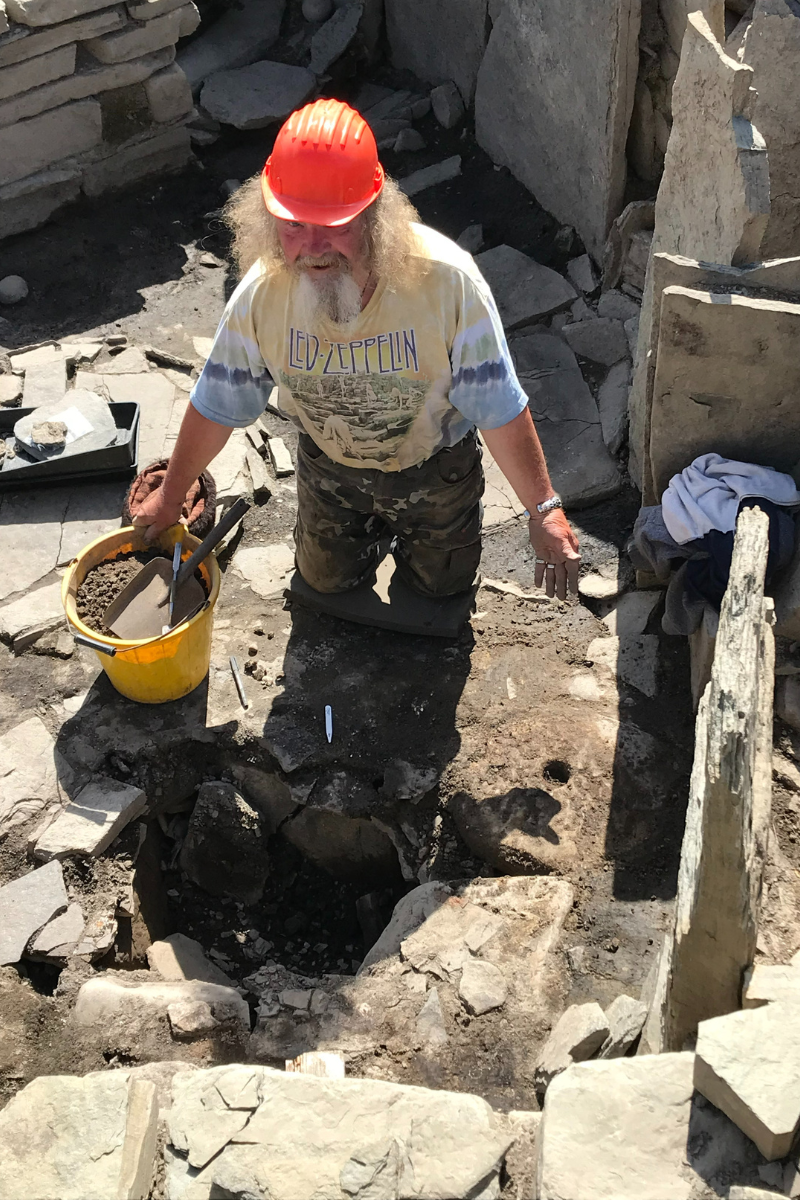
Above: Discarded rotary quern is incorporated into the flagged floor of Structure 6
I only got to briefly play in Structure 6 , but this clearly represented a hub of activity in the Pictish period with several hearths and surface deposits rich in ash, environmental and artefactual materials. Structure 6 was one of this year’s richest areas for finds, in addition to much pottery and worked bone (including a weaving comb and beater, and a rare glass ‘toggle’ bead), there has been evidence for links with the Roman world in the form of a coin and two brooches. Keith was particularly pleased with the discarded rotary quern which had found renewed life as part of the flagged floor. My little cell was devoid of artefacts but did have quite a lot of animal bone including a very large bird humerus (long bone in the upper limb) possibly from an eagle - if so, why?
As I left Swandro hundreds of sandbags were being filled ready to re-wrap the site (more good timing) … looking forward to next year’s excavation season already! Meanwhile, check out the Swandro-Orkney Archaeological Trust pages for more images of this impressive site, as well as insights into the evidence it holds of Iron Age life in the Northern Isles and the impact of coastal erosion on our world both now and in the past.
Above: Farewell to Rousay
By Jacqueline McKinley, Principal Osteoarchaeologist
